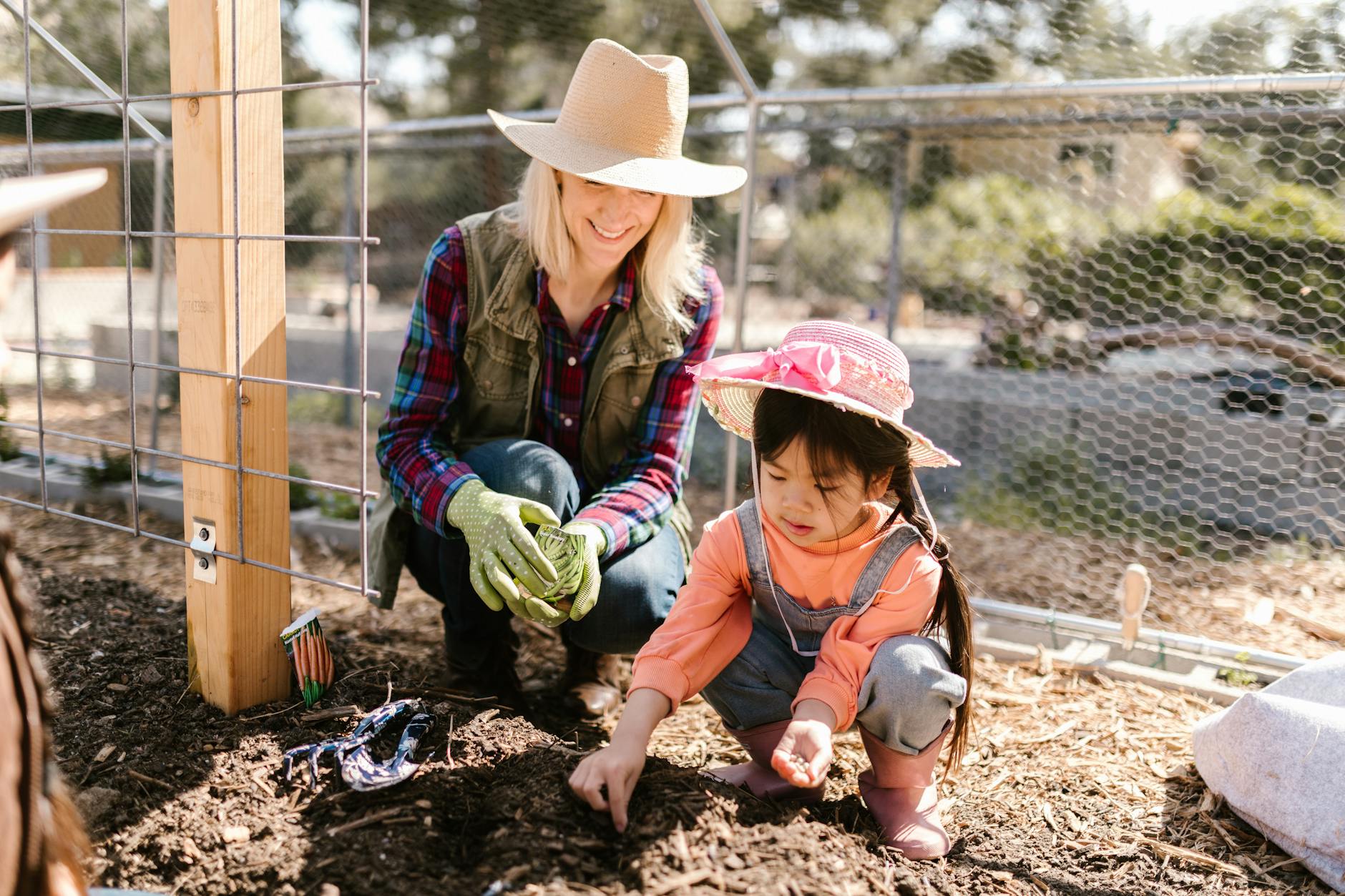By: A.A. French, M.Ed.
It’s finally that time of year! The sun is shining (mostly), the birds are singing, and
warmer temperatures have arrived! It’s time to grab your shovels or trowels and begin
planting your garden- wherever you are!
As a teacher and mom, I find planting a garden to be a powerfully positive
experience for children and adults. Sewing your seeds can be an opportunity for many
mini-lessons.
Whether your garden is set in the ground, in a greenhouse, a raised bed, a window
box, inside, outside, in pots on a porch or deck, or even on a rooftop, there are many
places the rich lessons of planting can be introduced and “cultivated.”
When mychildren were quite young, I remember giving them the simple task of
poking holes in the soil and gently placing the seeds, and then teaching them to cover
the seeds lightly. I often paired it with an educational song, “Inch by Inch, Row by Row”
by John Denver (see link below). While planting seeds, this song reinforces the
elements necessary for seeds to grow. You can also expand on these concepts by
explaining what seeds need: air, water, soil, space, and sunlight.
As children age, you can begin to have them help you plan your family garden
plot. Everyone can contribute ideas about the best place to grow specific fruits or
veggies- especially if space is limited. At our school, each class had a defined area to
plant seeds in our school-wide garden. We would survey the area, take measurements,
and decide what to grow as ideas were discussed with other teachers and the kitchen
staff (who prepared healthy meals from the produce) and what to plant where. Many
people have a specific, ideal area where planting would be best. Therefore, careful
consideration of the size of the garden plot often needs discussion and planning.
Parents and teachers can also incorporate math concepts such as multiplication and
division as you plan your plots.
The experience of planting a garden can also provide a great opportunity for
teaching basic plant biology. Seed structure, seed germination, optimal placement with
soil, water, and sunlight needs addressed, sprouting, plant growth, and plant structures
that enable survival and reproduction are all concepts that can be explored over time.
Later, seed dispersal and decomposition can also be discussed.
Placing planted seeds in various environments can reinforce the idea that seeds
need an ideal environment for growth and development. Try having your children plant
seeds in a closet (lack of sunlight) to observe what happens over time. Some variables
to try: different soils (sandy, rocky, potting soil, natural soil, compost), different amounts
of water, varying degrees of exposure to sunlight or artificial light, etc. Students are
often fascinated with the results of how their plants grow in different environments and
with different conditions. Get those rulers and magnifiers ready for some observations
and measurements!
These are just a few of the many ideas you can try when planting a garden with
your children. Don’t forget to make it fun! The joy of being a part of the natural
environment and learning about the beautiful balance and order in lifecycles can last a
lifetime! Get out there, roll up your sleeves, and get ready to plant those seeds! Enjoy!


Leave a Reply